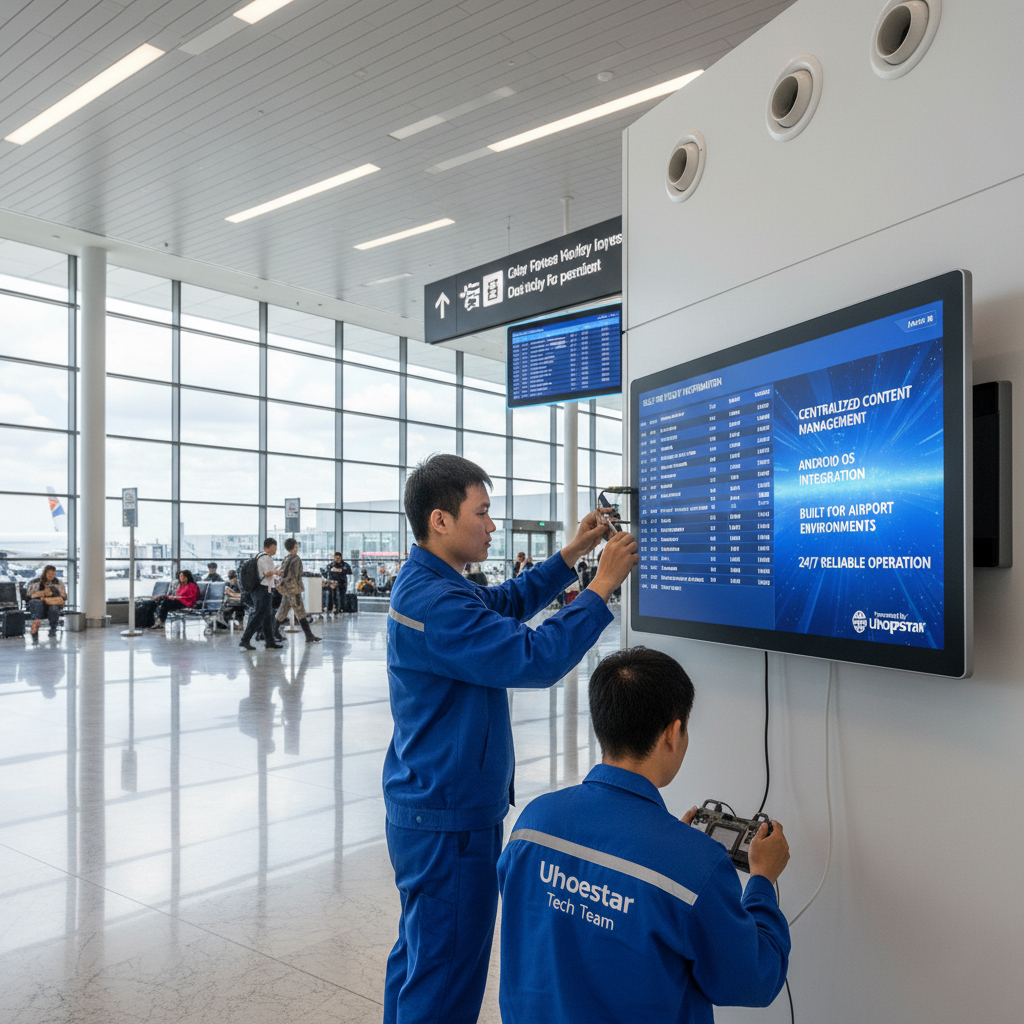Transforming Passenger Experience with Customized Airport Advertising Display Tablets
![]() 2025-11-17
2025-11-17
![]() Hopestar
Hopestar
Airports today operate as high-density hubs where efficiency, communication, and commercial value intersect. As global travel continues to rise, terminals must adapt to rapidly changing flight schedules while maintaining a smooth passenger experience. Yet many airports still rely on fragmented digital signage systems or outdated screens that cannot deliver real-time updates. The result is delayed information, inconsistent messaging, and missed commercial opportunities.
This was the situation faced by one of the busiest international airports in Asia when they began exploring a modern digital transformation strategy centered around a network of commercial display tablets.
A New Vision for Connected Passenger Spaces
The airport management team proposed an ambitious goal: create a fully connected information ecosystem where travelers could instantly access flight data, gate updates, and promotional content throughout the terminal. Instead of conventional signage, they wanted interactive advertising tablets and smart digital panels that could communicate dynamically with their operational systems.
To achieve this, they required an enterprise-grade solution—far beyond what consumer devices could offer. The system had to operate 24/7, withstand continuous foot traffic, and support integration with back-end flight information and advertising platforms.

Challenges That Blocked Their Progress
Before the airport adopted a modern network of signage tablets, they struggled with three major operational issues:
1. Fragmented Information Flow
Flight Information Display Systems (FIDS) and advertising CMS platforms functioned separately, making updates slow and inconsistent.
2. Unreliable Hardware
Consumer-level screens frequently overheated or malfunctioned under continuous operation in crowded terminals.
3. Limited Passenger Interaction
Static digital screens could not adapt content based on time, location, or passenger density.
To address these challenges, the airport required durable, interactive Android tablets that could process real-time information and handle long-term operation.

A Custom-Built Digital Signage Network
Engineers worked with the airport’s technical team to design a network of robust commercial display tablets tailored to busy aviation environments. These devices featured high-brightness panels to maintain clarity under strong terminal lighting, industrial-grade components for 24/7 duty cycles, and a flexible Android-based OS that allowed deeper system integration.
Through API connections, each smart tablet was synchronized with both the airport’s FIDS and CMS platforms. This integration allowed flight changes and advertising content to be updated simultaneously across hundreds of devices—without manual adjustments.
The open-API compatibility also enabled third-party partners to run promotional campaigns, integrate scheduling tools, or automate media playback without additional hardware.

Deployment Across the Passenger Journey
Once installed, the network of interactive advertising tablets covered essential passenger touchpoints—from check-in halls and boarding gates to lounges and retail walkways.
Passengers could:
View live flight updates
See gate changes instantly
Browse destination information
Watch promotional content
Retail zones used motion-triggered campaigns, ensuring ads displayed dynamically based on foot traffic patterns. This created a more personalized and engaging passenger experience while expanding commercial value for airport advertisers.
Even under heavy usage, the industrial-grade Android tablets delivered stable performance with no overheating, no lag, and no display degradation.

Efficiency Through Seamless System Integration
The new centralized management system changed how the airport operated. Updates that previously required tens of staff members and manual interventions were now synchronized instantly.
Flight changes appeared across all display tablets within seconds
Advertising teams could push campaigns in real time
IT personnel monitored device health remotely
Content scheduling became fully automated
This integration reduced operational workload by more than 60% while ensuring consistent visuals and accurate updates throughout the terminal.
What Changed: Clearer Information, Higher Revenue
After just a few months of deployment, the airport recorded notable improvements:
• 30% increase in passenger satisfaction
Travelers reported clearer, more accessible information, reducing confusion and crowding at central flight boards.
• Update delays dropped from 15 minutes to under 30 seconds
The real-time push system ensured immediate synchronization.
• 25% higher ad engagement
Interactive advertising tablets drew more attention and delivered better performance for commercial partners.
Every waiting area effectively became an informational and marketing hub, supported by a unified digital infrastructure.
Voices from Airport Operations
“Our communication workflow is dramatically smoother now,” noted the airport’s digital operations manager. “We are able to deliver real-time flight and commercial content without relying on manual updates. The difference is visible to both staff and travelers.”
Retail partners also appreciated the flexible advertising options enabled by the new signage tablet network, especially the ability to launch time-sensitive promotions instantly.
A Model for Future Airport Digital Transformation
This case demonstrates how modern commercial display tablets can redefine the way airports communicate, engage travelers, and generate new commercial value. Through real-time integration, industrial-grade hardware, and dynamic content capabilities, airports can bridge the gap between operational needs and passenger expectations.
For global airports seeking to modernize their terminals, interactive smart tablets and advertising tablets now serve as essential tools—turning digital displays into a strategic asset that enhances both efficiency and experience

 86 13392660243
86 13392660243 hope17@cnhopestar.com
hope17@cnhopestar.com
 whatsapp
whatsapp
 How a Smart Diagnosis Room Display Transformed Hospital Scheduling Efficiency
How a Smart Diagnosis Room Display Transformed Hospital Scheduling Efficiency 












